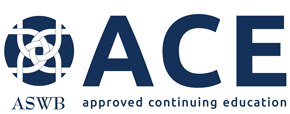Overview of Curriculum
Part 1: Introduction to MMR
This program area will welcome participants to the MMR CE program and introduce mixed methods research. We will begin by covering theoretical frameworks and the advantages of using theory for mixed methods research and practice in social work. This program area will also cover the basics of how to design a mixed methods research study. We will begin by discussing how to develop research questions, then we will cover mixed methods language and notation, and then we will discuss choosing a mixed methods design. Participants will be guided through how to develop a research question based on their phenomenon of interest. This is important because researchers make decisions about whether they will use qualitative, quantitative, or mixed methods after finalizing their research question. Communicating research designs throughout various stages of the planning, implementation, evaluation, and reporting of the project will also be covered. Then, this program area will cover transformative mixed methods, which are germane to the social justice lens of the social work profession. Participants will be challenged to view the research process through a culturally sensitive lens and to think about the implications of how the research we conduct with underserved and underrepresented groups influences what we learn from these groups.
Part 2: Qualitative Data Collection + Analysis
This program area will cover how to design a mixed methods research study that is qualitatively driven. We will begin by discussing how to decide on the data collection needed to address qualitatively driven research questions. Next, participants will be guided through how sampling plans are developed and recruitment strategies are made. Then, qualitative data collection methods will be discussed and presented in the context of their contribution to a mixed methods study. For example, qualitative data can access a phenomenon more directly than what is possible with formal, questionnaire-based measurements in part because pre-established questions are sometimes insensitive to important local cultural norms and idioms. Qualitative data, in focusing on natural language, deepen our understanding of the client's condition, clinician attribution of symptoms, and other treatment processes otherwise inaccessible to scientific analysis. For social workers and other applied professionals, the human voice can be one of the most valuable insights into learning and improving the outcomes of clients. Therefore, it is important to incorporate and properly use qualitative methods in our work. In this program area, participants will learn effective and efficient ways to collect and analyze qualitative data using one-on-one interviews, focus groups, and observation data collection methods.
Part 3: Quantitative Data Collection + Analysis
This program area will cover how to design a mixed methods research study that is quantitatively driven. We will begin by discussing how to decide on the data collection needed to address quantitatively driven research questions. Next, participants will be guided through how sampling plans are developed and recruitment strategies are made. Then, quantitative data collection methods will be discussed and presented in the context of their contribution to a mixed methods study. For example, formal, questionnaire-based measurements can capture large numbers of responses over a short time. Quantitative data (e.g., statistics) can sometimes be intimidating for social workers and other applied professionals. In this program area, participants will deepen their understanding of how quantitative data is collected and analyzed, and how they can be leveraged to address mixed methods questions that are quantitatively driven. We will also cover secondary data in mixed methods research, and how existing data can be leveraged to address mixed methods research questions. Since the purpose of statistics is to convey meaning about how certain variables (e.g., the independent and dependent) do or do not (and to what level) relate to each other, this program area will provide participants with a user-friendly way of incorporating statistics into their work. Though descriptive and inferential statistics will be covered, participants need to note that advanced statistical methods (e.g., structural equation modeling, and hierarchical linear modeling) will not be covered.
Part 4: MM Data Integration and Interpretation
This program area will cover data integration and interpretation techniques for mixed methods studies. Qualitative approaches promise to bridge the explanatory gap that exists between aggregated outcomes and actual events in the local situation. On the other hand, quantitative approaches promise the opportunity for true experimental designs as well as replication of study methods and generalization of findings. This program area will cover how to take the interpretation of mixed methods research a step further by preparing reports from mixed methods research studies. We will cover ways to comprehensively represent large and small qualitative datasets involving multiple cases both for inductive exploration and for more deductive examination of theoretically interesting relationships among data concepts and other variables. Communicating the research process is probably the most important step in any research project. Therefore, participants will learn about writing research reports, manuscripts for peer-reviewed journals, research briefs, and longer reports. Visual displays of mixed methods research results will also be discussed. The program will also cover the benefits and challenges of different ways of disseminating mixed methods research findings. Participants will be encouraged to consider how the factors that influence the dissemination of research findings influence how they approach their research. Participants will be encouraged to consider the concrete ways in which their work reflects rigor and quality. The program will also address using mixed methods in program evaluation and across disciplines.

 Alia G. Wesala
Alia G. Wesala  Jaclyn Ruffolo
Jaclyn Ruffolo  Ashley Harvey
Ashley Harvey